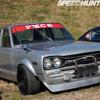Diy Head Port And Polish
Announcements
-
Similar Content
-
Latest Posts
-
Yeah almost Im the MC, its because Im so shy and dont like talking!
-
By iain_ST44GA · Posted
For this who are interested.. I can confirm that starter motors listed for the below will fit a VQ25DET VQ35DE VQ25DD VQ25DE I purchased a starter motor from MetaVParts (www.metavparts.com.au), the part number was 'SMOTOR-NS040'. A JAS Oceania SNJ432 will also fit. -
Do it at the ECU, there are pins that will need power that aren't available at the dash board connector.
-
About $4k brand new, available from vendors in Oz, or via an importer from Japan. Although that is for an R34 box, so you also need to buy the push clutch front plate (brand new from Nissan) and swap that over, and drill the bellhousing for a push clutch slave cylinder.
-
By nouveau_poor · Posted
Absolutely could be. I collected data logs from when the O2 sensor was still out and also after I had replaced it so will try to compare them. Pretty confident that the affect is lowered with the new sensor, will check logs at the same RPMs/conditions.
-







.thumb.jpg.1b7f9b555236b5ea56c3fed20c733de8.jpg)


Recommended Posts
Create an account or sign in to comment
You need to be a member in order to leave a comment
Create an account
Sign up for a new account in our community. It's easy!
Register a new accountSign in
Already have an account? Sign in here.
Sign In Now